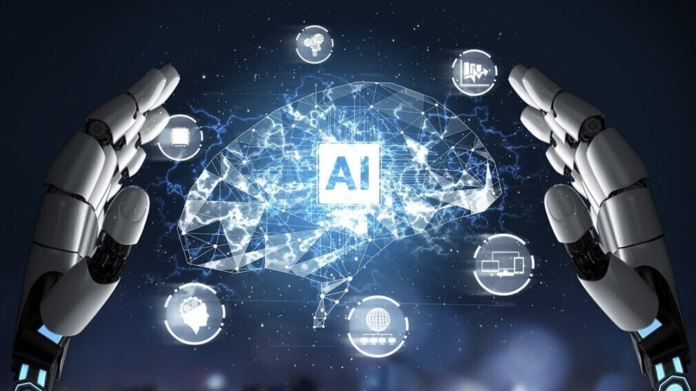Artificial Intelligence (AI) is no longer just a concept we see in movies or read about in science fiction books. Today, AI has become part of our everyday life—whether we realize it or not. From using voice assistants to receiving personalized recommendations on shopping websites, AI is quietly shaping the way we live, work, and interact. The changes are happening so naturally that most people don’t even notice how deeply AI has become integrated into their routines.
In this article, we’ll explore how artificial intelligence is transforming daily life, why it matters, and what it means for the future.
Understanding Artificial Intelligence in Simple Terms
Artificial intelligence is the ability of machines and computer systems to perform tasks that usually require human intelligence. This includes learning from experience, recognizing patterns, making decisions, and even predicting outcomes.
Unlike traditional computer programs that only follow a fixed set of rules, AI systems are designed to “learn” and “improve” over time. That’s why your smartphone can understand your voice better after using it for a while, or why your Netflix suggestions get closer to your taste the more you watch.
AI in Communication: Talking to Machines Like Humans
One of the most obvious ways AI has transformed daily life is through communication tools. Think about how often people use voice assistants like Siri, Alexa, or Google Assistant. These AI-powered tools help us set alarms, play music, get the weather forecast, or even control smart home devices—all just by speaking.
AI also plays a big role in translation apps. For example, Google Translate uses AI to instantly translate text or speech, making it easier for people around the world to connect despite language barriers.
AI in Entertainment: Personalized Choices
Gone are the days when you had to scroll endlessly through TV channels to find something to watch. Platforms like Netflix, YouTube, and Spotify use AI algorithms to analyze your preferences and suggest shows, videos, or songs you’re most likely to enjoy.
This personalization saves time and ensures you always have something that fits your mood. Even gaming has changed with AI—many modern video games use AI to create smarter opponents and more realistic experiences.
AI in Shopping: Smarter and Faster
Online shopping has grown massively in recent years, and AI has played a huge role in this shift. Retailers like Amazon use AI to suggest products you might like, based on your browsing and buying history.
Chatbots powered by AI now assist customers in real-time, answering questions, helping with orders, and even solving common issues. This improves the shopping experience while reducing the need to wait for human customer service agents.
AI is also used in virtual try-on features for fashion and beauty products. With the help of your camera and AI, you can see how a pair of glasses, a lipstick shade, or even clothes might look on you before making a purchase.
AI in Healthcare: Better Care and Early Detection
AI is transforming healthcare in ways that save lives. Hospitals and clinics use AI to analyze medical images, detect diseases earlier, and even recommend personalized treatment plans. For example, AI tools can spot signs of cancer or heart disease faster and more accurately than humans in some cases.
Wearable devices like smartwatches also use AI to monitor heart rate, sleep patterns, and activity levels, providing users with insights into their health. Doctors can use this data to better understand a patient’s condition and provide more tailored care.
AI in Transportation: Smarter Travel
If you’ve used Google Maps or Uber, you’ve already interacted with AI in transportation. These apps rely on AI to find the best routes, predict traffic, and estimate arrival times.
Self-driving cars are another big step in this area. Companies like Tesla and Waymo are developing AI-powered vehicles that can navigate roads, avoid obstacles, and even make split-second decisions to ensure passenger safety. While fully autonomous cars are not yet everywhere, AI is already improving car safety through features like automatic braking, lane detection, and adaptive cruise control.
AI in Work and Education: Smarter Tools for Learning and Productivity
AI is changing the workplace too. Tools like Grammarly help people write better by checking grammar and suggesting improvements. Virtual meeting assistants can summarize conversations and generate action points, saving time for teams.
In education, AI-driven platforms personalize learning for students. Apps like Duolingo use AI to adjust lessons based on how quickly a learner progresses. This makes education more effective and engaging. Teachers also benefit from AI tools that help grade assignments or identify students who need extra support.
AI in Smart Homes: Making Life Easier
Smart home devices powered by AI have made daily life more convenient. From smart thermostats that learn your temperature preferences to refrigerators that remind you when groceries are running out, AI is making homes more efficient.
Security systems with AI can detect unusual activities and alert homeowners instantly, making families feel safer. Even robotic vacuum cleaners use AI to map rooms and clean more effectively.
The Benefits of AI in Daily Life
AI has clear advantages that make life easier and more efficient:
- Convenience: Automates routine tasks like scheduling, reminders, and online shopping.
- Personalization: Tailors recommendations, ads, and content to individual preferences.
- Efficiency: Speeds up decision-making in healthcare, business, and education.
- Safety: Improves driving, home security, and fraud detection.
Challenges and Concerns of AI
While AI brings many benefits, it also raises some concerns:
- Privacy: AI systems often rely on collecting personal data, raising questions about security and misuse.
- Job Loss: Automation may replace certain jobs, especially repetitive ones.
- Bias: AI systems can sometimes reflect human biases in their decision-making.
- Dependency: Relying too much on AI could reduce human skills in problem-solving and critical thinking.
Addressing these challenges requires careful regulation, ethical guidelines, and transparency in how AI is developed and used.
The Future of AI in Daily Life
Looking ahead, AI will likely become even more integrated into our lives. We can expect smarter healthcare solutions, safer transportation, more advanced personal assistants, and even AI companions that provide emotional support.
However, the future of AI will depend on how responsibly we use it. If managed wisely, AI has the potential to make daily life not only easier but also healthier, safer, and more connected.
Conclusion
Artificial intelligence is no longer a futuristic dream—it is here, and it is shaping the way we live every day. From shopping and entertainment to healthcare and education, AI is quietly working behind the scenes to make life more convenient and efficient.
The key is to embrace AI while staying mindful of its challenges. By doing so, we can harness its power in ways that improve our lives without losing sight of human values.
FAQs about AI in Daily Life
1. How is AI used in everyday life?
AI is used in voice assistants, online shopping recommendations, healthcare, smart homes, education apps, and transportation services like Google Maps and Uber.
2. Will AI take over human jobs completely?
AI may replace some repetitive tasks, but it also creates new opportunities. Humans are still needed for creativity, empathy, and decision-making.
3. Is AI dangerous for privacy?
AI can collect large amounts of personal data, which raises privacy concerns. Using trusted apps, adjusting privacy settings, and supporting data protection laws can help reduce risks.
4. Can AI think like a human?
No, AI does not think or feel like humans. It processes data, learns patterns, and makes predictions, but it doesn’t have emotions or consciousness.
5. What’s the future of AI in daily life?
In the future, AI is expected to play a larger role in healthcare, transportation, education, and home automation. With responsible development, it could greatly improve quality of life.

